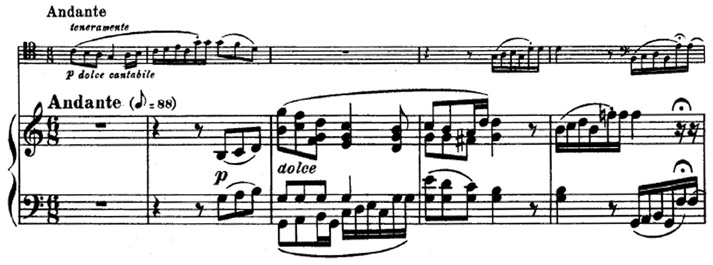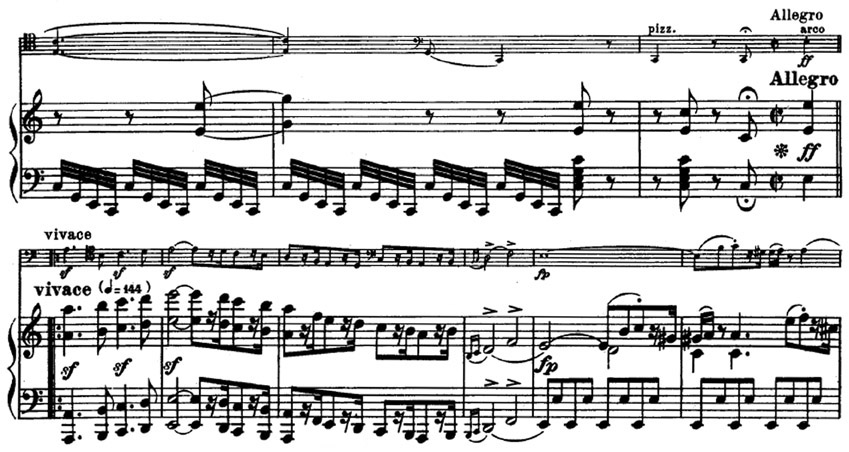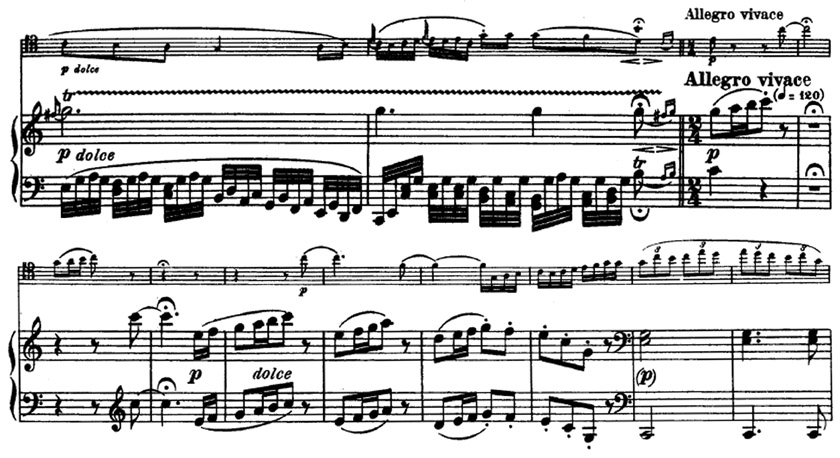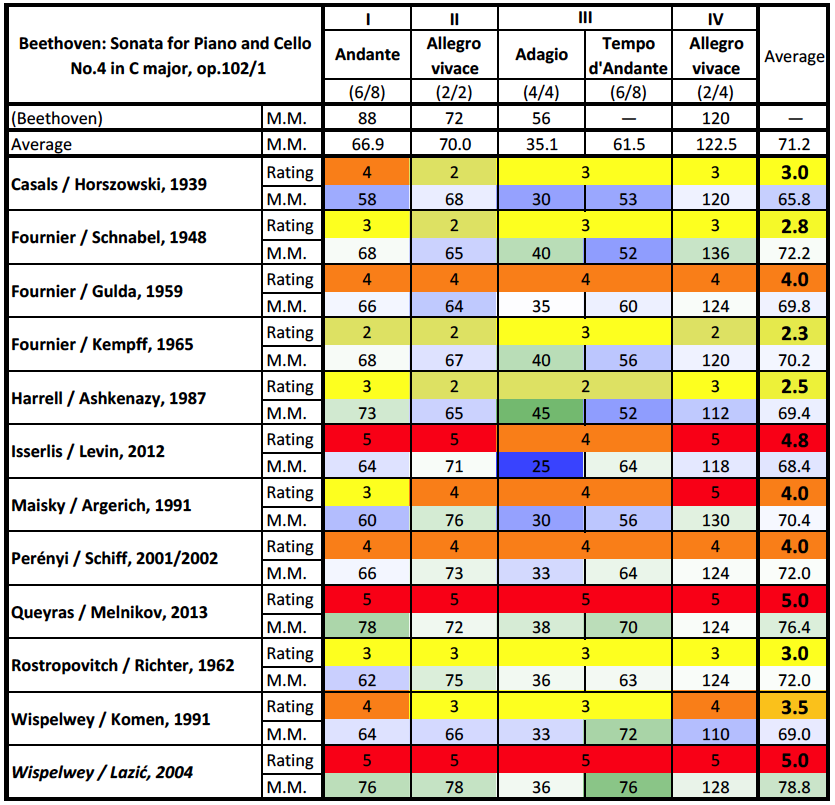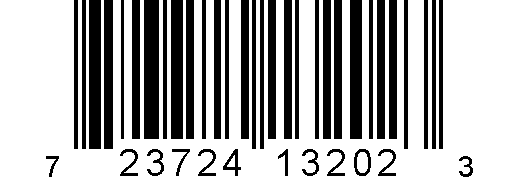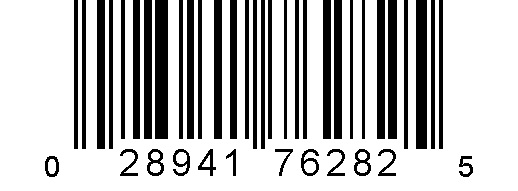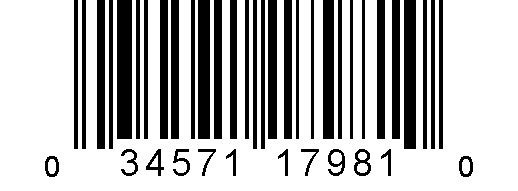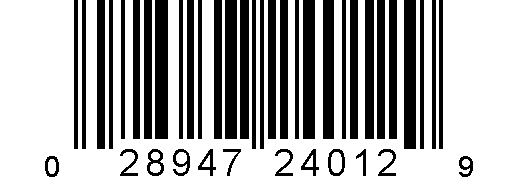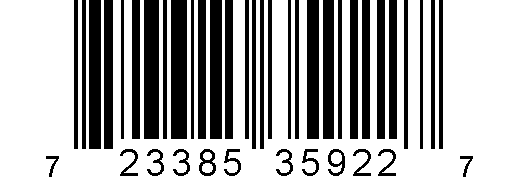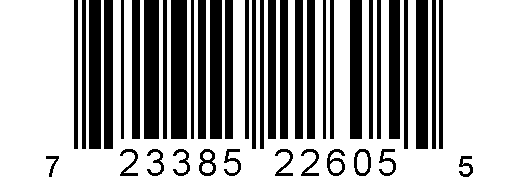Ludwig van Beethoven
Sonata for Piano and Cello in C major, op.102/1
Media Review / Comparison
2018-01-08 — Original posting
Table of Contents
- Introduction
- The Recordings
- Background, About the Composition
- The Interpretations, Overview
- The Interpretations in Detail
- Pablo Casals and Mieczysław Horszowski (1939)
- Pierre Fournier and Artur Schnabel (1947)
- Pierre Fournier and Friedrich Gulda (1959)
- Pierre Fournier and Wilhelm Kempff (1965)
- Lynn Harrell and Vladimir Ashkenazy (1987)
- Steven Isserlis and Robert Levin (2012)
- Mischa Maisky and Martha Argerich (1993)
- Miklós Perényi and András Schiff (2001/2002)
- Jean-Guihen Queyras and Alexander Melnikov (2013)
- Mstislav Rostropovich and Sviatoslav Richter (1962)
- Pieter Wispelwey and Paul Komen (1991)
- Pieter Wispelwey and Dejan Lazić (2004)
- Conclusions
- Addendum
Introduction
This is another note on the recordings of Beethoven’s sonatas for piano & cello in my music collection, about the Sonata in C major, op.102/1 — references to the CDs are given at the bottom of the respective section, or see the summary on the postings covering Beethoven’s Sonatas for Piano & Violoncello.
The Recordings
Below you find my comments on the recordings that I have for the Sonata for Piano and Cello in C major, op.102/1 (references to the recordings are given in each section). Here’s a short list of the recordings in this comparison, in alphabetic order (last name of the cellist):
- 1936: Pablo Casals & Mieczysław Horszowski
- 1947: Pierre Fournier & Artur Schnabel
- 1959: Pierre Fournier & Friedrich Gulda
- 1965: Pierre Fournier & Wilhelm Kempff
- 1987: Lynn Harrell & Vladimir Ashkenazy
- 2012: Steven Isserlis & Robert Levin
- 1993: Mischa Maisky & Martha Argerich
- 2001/2002: Miklós Perényi & András Schiff
- 2013: Jean-Guihen Queyras & Alexander Melnikov
- 1962: Mstislav Rostropovich & Sviatoslav Richter
- 1991: Pieter Wispelwey & Paul Komen
- 2004: Pieter Wispelwey & Dejan Lazić
Background, About the Composition
Ludwig van Beethoven (1770 – 1827) wrote his Sonata for Piano and Cello in C major, op.102/1 in 1815; he published both sonatas in op.102 two years later, with a dedication for Countess Anna-Maria Erdödy (1779 – 1837), for many years Beethoven’s admirer and patron.
The Movements
Beethoven’s Sonata for Piano and Cello in C major, op.102/1 has two movements—or four, if not even five, depending on how one reads the score. I decided for a four-movement reading (with movements 2 & 4 as longest / main ones). This is what half of the recordings in this posting do:
I. Andante (6/8, 1/8 = 88, 27 bars) —
The Sonata begins with a 27-bar Andante Introduction—or movement, if you like: teneramente, i.e., gentle, lyrical, as well as dolce cantabile. Note that the time signature is 6/8, i.e., 2 beats per bar (3/8 + 3/8):
II. Allegro vivace (2/2, 1/4 = 144, 127 bars)
The Allegro vivace movement follows attacca, after a fermata. It’s a movement in A minor, determined, almost grim:
III. Adagio (4/4, 1/8 = 56, 9 bars) — Tempo d’Andante (6/8, 7 bars) —
The central, slow movement seems totally introverted. It is dominated by earnest, pensive segments.
However, towards the Tempo d’Andante, the mood brightens up gradually, and the Tempo d’Andante is then really a serene, calm segment (just 7 bars)—more of a transition / preparation for the final Allegro vivace section / movement:
IV. Allegro vivace (2/4, 1/4 = 120, 233 bars)
The Allegro vivace section is the most joyful of the movements—in a way compensating for the seriousness of the first Allegro vivace above:
The Interpretations, Overview
In order to provide a rating overview, as well as an idea about tempo relations both within an interpretation, as well as between the two recordings, I have prepared the table below. The color coding for the tempo (blue = slower, green = faster) refers to the average between the recordings:
Note that the metronome rates are approximate, especially for the Adagio and Tempo d’Andante segments (III.). The Adagio is in 4/4 time—however, Beethoven’s Metronome mark, as well as the measured values for that segment are in quavers (1/8).
The Interpretations in Detail
All of the recordings below are part of complete sets, covering all Beethoven cello sonatas; most of them also include some or all of the variation sets, two include the sonata op.17, originally written for horn and piano.
Pablo Casals and Mieczysław Horszowski (1939)
Beethoven: The Sonatas for Cello & Piano; Variations WoO 46; Minuet in G, WoO 10/2
Pablo Casals & Mieczysław Horszowski
Otto Schulhof, Alfred Cortot
Allegro / The Great Performers, CDO 4005 (2 CDs, mono); © 2001
Booklet: 4 pp. english

For details / general information on the artists see my posting “Beethoven: Cello Sonata in A major, op.69“.
I. Andante — II. Allegro vivace
Duration: 8’32”
I like how Casals plays the teneramente / dolce cantabile with an almost whispered pianissimo, with an airy tone, soft, mellow—yet with clear articulation and very little / inconspicuous vibrato: excellent!
In parts, I think that the Allegro vivace fell prey to the limitations in recording technique: sound-wise, the piano appears to kill the cello, appears rather coarse, and certainly lacking subtlety in agogics.
III. Adagio — Tempo d’Andante — IV. Allegro vivace
Duration: 7’43”
As if he wanted to highlight the earnest aspects of the sonata, Casals develops his Adagio part from soft and calm to somber and fairly dramatic, while the piano remains light in the hemidemisemiquaver sequences. The movement feels entirely static, time seems suspended. A tempo feeling only sets in with the regular demisemiquaver figures in the piano part. In the long notes, Casals sticks to his intonation, even if it disagrees (slightly) with the tuning of the piano, highlighting the dramatic, painful aspects of this music.
In stark contrast to the somber grumbling of the Adagio, the Tempo d’Andante exhibits intense, persistent singing in the cello part.
The intense cello singing in the high registers is also found in the Allegro vivace; sadly, that part of the interpretation suffers from some coordination issues. The two artists didn’t always seem to follow the same concept in terms of agogics: two very impulsive characters in very dramatic playing. From today’s perspective, some of the rubato feels vastly exaggerated.
| Duration: | 16’14” |
| Recommendation: | Undoubtedly a very valuable historic recording, focusing on showing Casals’ intensely singing cello tone, the strong, dominating character of his interpretation. A historic document that one should not compare with modern recordings. |
| Rating: | 3.0 (4 / 2 / 3 / 3) |
Pierre Fournier and Artur Schnabel (1947)
Beethoven: The Sonatas for Cello & Piano; Schubert: 6 Moments Musicaux op.94, D.780
Pierre Fournier & Artur Schnabel
Andromeda, ANDRCD 5108 (2 CDs, mono); ℗ 2007
Booklet: 4 pp. (track listing only)

For details / general information on the artists see my posting “Beethoven: Cello Sonata in A major, op.69“.
I. Andante — II. Allegro vivace
Duration: 8’09”
To a fair degree, the Andante introduction is dominated by Fournier’s dense tone (typical of his playing at that time), his prominent, strong, omnipresent, but still harmonious vibrato. That said, it soon is clear that it’s Schnabel who controls the agogics.
As nice as Fournier’s playing sounds in the introduction, in the Allegro vivace, the cello sounds far less favorable: coarse, with twanging strings. The piano is leading—sadly occasionally rushing forward. From listening through headphones, I got the impression that somehow, the transfer technique was too intrusive: there is some odd spatial effects, as if the technicians tried creating stereo from a mono recording: not a good idea!
III. Adagio — Tempo d’Andante — IV. Allegro vivace
Duration: 6’44”
In the Adagio, also this recording features very intense singing on the cello, though here with much more, more intense vibrato, and maintaining full sonority all over the range. The interpretation is not static at all: Schnabel appears to control it with his strong agogics / tempo concept.
Sadly, the sound management adds the same odd component as in the first track, whereby the piano appears on the left, while depending on the pitch, the cello is either in the same location as the piano, or right in the center. I haven’t tried switching to “mono” for this recording, but I suspect that this might normalize things a bit.
Also in the Tempo d’Andante, Schnabel appears to be in control of the coordination, the agogics, building up tension towards the final part.
The Allegro vivace is the fastest of all in this comparison; it often borders on exaggeration, in terms of rubato / extreme tempo variation / jumps: Schnabel is very uncompromising in the realization of his view of the piece.
| Duration: | 14’53” |
| Recommendation: | Also this is an important historic document, particularly because of Schnabel’s contribution. The digital transfer is non-ideal, though, and some aspects of the interpretation may feel almost outlandish today. |
| Rating: | 2.8 (3 / 2 / 3 / 3) |
Pierre Fournier and Friedrich Gulda (1959)
Beethoven: The Sonatas for Cello & Piano; Variations WoO 45, 46, op.66
Pierre Fournier & Friedrich Gulda
IDG 00289 477 6266 (2 CDs, stereo); ℗ 1960 / © 2006
Booklet: 24 pp. e/d/f

For details / general information on the artists see my posting “Beethoven: Cello Sonata in A major, op.69“.
I. Andante — II. Allegro vivace
Duration: 8’30”
Twelve years after the first recording, there had been a lot of progress in recording technique: the early stereo sound is much better than in the earlier recording above. Also, in the introduction, Fournier’s vibrato is far less prominent / intrusive. Here, I have the feeling tat the two artists form a true team, with carefully tuned agogics: excellent!
In the Allegro vivace part, I like the excellent acoustic balance between the two instruments, and Gulda’s clarity, his masterful control of the dynamics between the two hands, the detailed and careful articulation, and how he is never obtrusive to the cello part: excellent!
III. Adagio — Tempo d’Andante — IV. Allegro vivace
Duration: 7’04”
In the Adagio, the amount of differentiation in the hemidemisemiquaver passages, particularly on the piano is obvious, as is the care and detail in dynamics, agogics / rubato. A much more balanced and equilibrated performance that the earlier one with Schnabel.
I like the fluent tempo in the Tempo d’Andante—pretty close to the pace of the initial Andante, indeed.
In the Allegro vivace, the piano takes the lead role; yet, Gulda carefully ensures that the performance appears as from a single mind / spirit. An amazingly unpretentious interpretation!
| Duration: | 15’34” |
| Recommendation: | Clearly my favorite among the historic and other early or traditional (pre-1990) recordings! |
| Rating: | 4.0 (4 / 4 / 4 / 4) |
Pierre Fournier and Wilhelm Kempff (1965)
Beethoven: The Sonatas for Cello & Piano; Variations WoO 45, 46, op.66
Pierre Fournier & Wilhelm Kempff
DG 453 013-2 (2 CDs, stereo); ℗ / © 1966
Booklet: 28 pp. e/d/f/i/sp

For details / general information on the artists see my posting “Beethoven: Cello Sonata in A major, op.69“.
I. Andante — II. Allegro vivace
Duration: 8’03”
As already in the earlier sonatas, this recording is mostly disappointing: colorless, not really two artists acting with one spirit / mind, the piano sometimes rushing ahead.
The same holds true for the Allegro vivace: to me, this is not a true duo performance, the piano lacks differentiation, sometimes is even coarse, despite lively dynamics. If the artists use agogics, I don’t see a joint, compelling concept.
III. Adagio — Tempo d’Andante — IV. Allegro vivace
Duration: 7’08”
I don’t understand why in the Adagio Kempff does a crescendo over the ascending hemidemisemiquaver passages—this is neither written in the score, nor necessary. Overall, the piano is too dominant, especially up to bar #6.
The Tempo d’Andante allows Fournier to play out his beautiful, singing tone. Overall, these slow segments are the best part of this recording.
In the Allegro vivace, an excess of legato playing makes the transparency suffer. In the deep, expressive, the interpretation sometimes sounds mostly loud, coarse. Very strong rubato around the general rests, with a subsequent accelerando that is on the border of feeling odd.
| Duration: | 15’11” |
| Recommendation: | Not my favorite recording, despite Fournier’s beautiful tone (when singing in the high registers). If you like Fournier, I recommend the recording with Gulda. |
| Rating: | 2.3 (2 / 2 / 3 / 2) |
Lynn Harrell and Vladimir Ashkenazy (1987)
Beethoven: The Sonatas for Cello & Piano
Lynn Harrell & Vladimir Ashkenazy
Decca / London 417 628-2 (2 CDs, stereo); ℗ / © 1987
Booklet: 39 pp. e/f/d

For details / general information on the artists see my posting “Beethoven: Cello Sonata in A major, op.69“.
I. Andante
Duration: 2’37”
The Andante may seem to be on the fast side, but considering the 6/8 time signature, it’s actually a good tempo! I also noted vary careful dynamics and articulation.
II. Allegro vivace
Duration: 5’14”
Here, the vibrato is way too strong and nervous (and omnipresent)—strong enough to affect the (perception of) intonation. The interpretation is very expressive often vehement, yet in soft segments often feels “spongy”, diffuse, too mellow. And there are moments where there seem to be problems with tempo control.
III. Adagio — Tempo d’Andante —
Duration: 2’01” + 0’51” = 2’52”
The Adagio (the fastest in this comparison) feels too metric—some additional agogics would have been a great help.
The same holds true for the Tempo d’Andante, where I also dislike the frequency of portamento.
IV. Allegro vivace
Duration: 4’23”
The Allegro vivace appear tilted towards the piano, and the interpretation appears “softish” on the cello. The fugato often sounds rather harsh / noisy on the cello (especially the f / ff accents on the low strings). I don’t think that’s necessarily the nature of Beethoven’s composition.
| Duration: | 15’03” |
| Recommendation: | I can’t really recommend this. |
| Rating: | 2.5 (3 / 2 / 2 / 3) |
Steven Isserlis and Robert Levin (2012)
Beethoven: The Sonatas for Cello & Piano, incl. op.17; Variations WoO 45, 46, op.66
Steven Isserlis & Robert Levin
hyperion CDA67981/2 (2 CDs, stereo); ℗ / © 2014
Booklet: 24 pp. e/f/d

This is a recent recording, with Steven Isserlis (*1958), accompanied by Robert Levin (*1947). Isserlis plays a cello by Stradivarius, “Marquis de Corberon”, from 1726, and a Tourte bow. Levin plays a fortepiano by Paul McNulty — a replica after an instrument by Walter & Sohn from around 1805.
I. Andante
Duration: 2’54”
What refined playing! Isserlis expectedly uses very little vibrato, and mostly a restrained tone—and all the more one can hear the beautiful colors, the singing of the Walter fortepiano. Needless to say that the two musicians exhibit excellent duo playing, beautiful, delicate agogics. I like those subtle fermatas, and the unpretentious piano cadenza in bar 24, exhibiting the full beauty of the fortepiano!
II. Allegro vivace
Duration: 5’11”
A very balanced recording! I don’t think the sound engineer needed to make major adjustments in the relative volume: the Walter instrument can compete amazingly well, also in f / ff passages. Actually, it doesn’t need to compete: the bright sound, the singing tone naturally make the instrument stand out across the range, without ever being in danger of covering the cello: achieving duo balance and transparency is so easy without a modern concert grand!
III. Adagio — Tempo d’Andante —
Duration: 3’16”
Adagio: now, here’s a recording with a proper fortepiano and proper sound balance! Yes, Levin does hit the bass hard in those left hand, accented chords, up to the occasional (moderate, brief) twanging, but overall, the recording remains transparent and balanced all over the range, and all the time. Isserlis probably wanted to turn out the earnest, dramatic nature of this movement: relative to the notation (Adagio, 4/4, annotated 1/8 = 56)), though, I find the tempo (if there is a tempo at all!) too slow: by a large margin, this recording is slower than any other (in this comparison). The hemidemisemiquaver figures are played out too much, too regular. Still, of course, Isserlis’ plying is very impressive and expressive, also with little vibrato.
With the slow pace in the Adagio, the contrast to the Tempo d’Andante is almost dramatic: I really like that part!
IV. Allegro vivace
Duration: 4’28”
Excellent: a performance and interpretation like from a single mold! Both detailed and dramatic, expressive, vivid, lively, transparent. And (unlike with the Broadwood in the recording below) the general rests are what the ought to be: moments of silence, full of tension!
| Duration: | 15’46” |
| Recommendation: | With one minor reservation, this is among the very top favorites for this sonata, highly recommended (and definitely the preferred recording if you are looking for a recording with an excellent [replica of a ] period keyboard instrument) |
| Rating: | 4.8 (5 / 5 / 4 / 5) |
Mischa Maisky and Martha Argerich (1993)
Beethoven: The Sonatas for Cello & Piano; Variations WoO 45, 46, op.66
Mischa Maisky & Martha Argerich
DG 453 748-2 (2 CDs, stereo); ℗ 1991/93 / © 1997
Booklet: 46 pp. e/d/f

For details / general information on the artists see my posting “Beethoven: Cello Sonata in A major, op.69“.
I. Andante
Duration: 2’59”
Is this the “Rostropovich tradition”? The tempo is even a tad slower than Rostropovich’s—(too) slow for an Andante in 6/8 time (and much slower than what Beethoven specifies!). Also, Maisky’s vibrato is both (too) strong and nervous. On top of that, at least in the initial segment, Maisky tends to use belly notes, occasionally.
II. Allegro vivace
Duration: 4’54”
Here now, Martha Argerich is in her proper element: good tempo, vivid and always alert in articulation and dynamics, with a distinct, expressive rubato, although occasionally feeling a bit rushed / pushed.
III. Adagio — Tempo d’Andante —
Duration: 3’21”
In the hemidemisemiquaver sequences in the Adagio, Argerich deliberately, consciously blurs the sound with the sustain pedal: an interesting, but questionable “feature”, especially in view of the sound of historic / period instruments (and the complete absence of any annotation to this effect). The tempo is among the slowest, but neither boring nor static—rather “strongly shaped”, with excellent dramatic arches, through agogics and dynamics. Excellent balance between the instruments.
I like the tempo in the Tempo d’Andante.
IV. Allegro vivace
Duration: 4’09”
Fast, virtuosic, good sonority, vivid, with explosive attacks / outbreaks from the piano, sending out almost seismic shocks. Without the slightest care about twanging strings: Martha Argerich at her best, expression is key, is everything! Yes, it is exaggerated—but it is hard not to like this performance for its liveliness!
| Duration: | 15’21” |
| Recommendation: | An interpretation with extremes, definitely good & interesting, though with exaggerations that border on mannerism. |
| Rating: | 4.0 (3 / 4 / 4 / 5) |
Miklós Perényi and András Schiff (2001/2002)
Beethoven: The Sonatas for Cello & Piano, incl. op.17; Variations WoO 45, 46, op.66
Miklós Perényi & András Schiff
ECM New Series 1819/20 (2 CDs, stereo); ℗ / © 2004
Booklet: 28 pp. d/e

For details / general information on the artists see my posting “Beethoven: Cello Sonata in A major, op.69“.
I. Andante
Duration: 2’44”
This is at the lower limit, tempo-wise, for an Andante in 6/8. However, the interpretation is very careful, diligent and differentiated in dynamics and articulation, building excellent dynamic arches / phrases.
II. Allegro vivace
Duration: 4’50”
The above also applies to the Allegro vivace part: an excellent interpretation, clear and transparent in the piano part, with outstanding articulation in the left hand. My only minor quibble is that the piano occasionally appears to push the tempo a bit.
III. Adagio — Tempo d’Andante —
Duration: 2’58”
As in general in this interpretation, the Adagio features very careful, diligent articulation, agogics and dynamics, and a lot of attention to detail in motifs and phrasing. Schiff often uses a tad of arpeggiando articulation—luckily not as systematically as to feel “ex cathedra” (a certain danger with this artist!).
The pace in the Tempo d’Andante almost exactly matches that of the initial Andante—certainly not a coincidence with these artists!
IV. Allegro vivace
Duration: 4’16”
Excellent cello sonority. The artists are masters in building up impressive, harmonious climaxes, without letting the sonority getting out of control. The soundscape remains transparent also in the fugato segments, where Perényi uses short spiccato articulation for the sf / ff accents, rather than broad portato—yet every stroke is clear, retains the full sonority of the instrument.
| Duration: | 14’47” |
| Recommendation: | An excellent, careful and detailed performance, nearly perfect in sonority and overall balance—maybe on the border of being “too well-behaved”, “too equilibrated”? Certainly recommended, though. |
| Rating: | 4.0 (4 / 4 / 4 / 4) |
Jean-Guihen Queyras and Alexander Melnikov (2013)
Beethoven: The Sonatas for Cello & Piano; Variations WoO 45, 46, op.66
Jean-Guihen Queyras & Alexander Melnikov
Harmonia mundi HMC 902183.84 (2 CDs, stereo); ℗ 2014
Booklet: 20 pp. f/e/d

For details / general information on the artists see my posting “Beethoven: Cello Sonata in A major, op.69“. Queyras plays a cello by Gioffredo Cappa from 1696, Melnikov plays a modern concert grand.
I. Andante — II. Allegro vivace
Duration: 7’27”
Ah—love it! If there was any need to prove that vibrato is best used as ornament, or a means to highlight key notes, here it is! Queyras uses it to make long notes gradually evolve, flourish, without using crescendo; some phrases are without any vibrato (or the vibrato is totally inconspicuous)—and it works! It works even better without the distraction of an excess of vibrating. Melnikov joins in, perfectly in-tune with the cellist, and together, they show exemplary, diligent and subtle agogics! A nice detail: in bar 5, Queyras doesn’t play out the crotchet on the first beat—he just starts it, then lifts the bow and lets the freely resonating string do the rest!
Very resolute, but never harsh, excellent duo playing, very vivid in dynamics and articulation, expressive, on both parts: superb! “Thick”, dense sound in f / ff segments is avoided by using short/light articulation.
III. Adagio — Tempo d’Andante — IV. Allegro vivace
Duration: 7’10”
The Adagio is wonderfully differentiated and detailed in agogics and dynamics in the hemidemisemiquaver passages, and Queyras uses virtually no vibrato, leaving Beethoven’s dissonances pure and clear: so clear that one even forgets that they are dissonances!
I absolutely like the fluent tempo in the Tempo d’Andante—one can clearly feel the 6/8 time.
The Allegro vivace in my opinion is as expressive as Argerich / Maisky‘s—but without the excesses: the sonority is excellent, remains controlled (but not too tamed!). Excellent articulation, detailed in dynamics
| Duration: | 14’36” |
| Recommendation: | Clearly one of my top favorites! Maybe not HIP in instrumentation (piano, bow), but definitely so in technique / articulation. |
| Rating: | 5.0 (5 / 5 / 5 / 5) |
Mstislav Rostropovich and Sviatoslav Richter (1962)
Beethoven: The Sonatas for Cello & Piano
Mstislav Rostropovich & Sviatoslav Richter
Philips 412 256-2 (2 CDs, stereo); ℗ 1963
Booklet: 11 pp. e/d/f

For details / general information on the artists see my posting “Beethoven: Cello Sonata in A major, op.69“.
I. Andante — II. Allegro vivace
Duration: 7’41”
The Andante is on the slow side—one cannot feel the 6/8 time signature.
On the other hand, I like the tempo in the Allegro vivace: this fits the alla breve notation. Svjatoslav Richter appears to assume the lead role. Unfortunately, the cello articulation isn’t always well-defined, sometimes borders on superficial, if not sloppy.
III. Adagio — Tempo d’Andante — IV. Allegro vivace
Duration: 6’56”
I don’t understand why the Adagio is accelerating in the demisemiquaver segment in bars 4ff. The tempo is on the slow side, and yet, the Adagio lacks the calm pace that other interpretations exhibit. Yes, the emotions build up through a crescendo—but that does not imply accelerando. Yet, in the detail, i.e., at the level of motifs, the piano sounds fairly metric.
In the Tempo d’Andante, particularly in view of more recent interpretations, Rostropovich’s vibrato is too prominent / dominating.
The Allegro vivace features good balance between the instruments, good cello sonority, also in the “strong” fugato segments. Also the piano is singing in Richter’s hands.
| Duration: | 14’36” |
| Recommendation: | Expectedly, a good interpretation & performance—but one that in my opinion is superseded by more recent recordings. In terms of carefulness & detail in articulation, among the “traditional interpretations”, I would prefer Gulda / Fournier. |
| Rating: | 3.0 (3 / 3 / 3 / 3) |
Pieter Wispelwey and Paul Komen (1991)
Beethoven: The Sonatas for Cello & Piano
Channel Classics CCS3592 (2 CDs, stereo); ℗ / © 1992
Booklet: 20 pp. e/nl/d/f

Pieter Wispelwey (*1962) recorded the Beethoven cello sonatas twice; this is the earlier recording, covering the sonatas only (not the variations or op.17), with Paul Komenplaying a historic Broadwood fortepiano from 1823 (the same instrument model that Beethoven received from Broadwood in 1818 as a gift, on behalf of Muzio Clementi). Wispelwey plays a cello by Barak Norman from 1710.
I. Andante
Duration: 2’53”
Some artists (such as Artur Rubinstein) play fast, virtuosic in their youth, then slow down over the years. Wispelwey seems to do the opposite: his early recording is among the slowest in this comparison, for both the first and the second movement. Here, the 6/8 beat is hardly heard as such. And he uses more vibrato than 2004—though never nervous, nor ever obtrusive. The cello dominates over the fortepiano. But the latter is still able to show its nice sound colors, the light & flexible touch.
II. Allegro vivace
Duration: 5’24”
Paul Komen now plays out the “strong side” of the Broadwood instrument: this instrument can certainly produce an impressive volume, which can compete with Wispelwey’s Barak Norman cello. But the recording also shows the downsides of that instrument. Broadwoods were known to be “noisy”, rough in the forte—and the dampers are very short (some would say insufficient), in that in general rests after a f or ff chord, there is certainly anything but silence. This is not a deficiency of the historic instrument—replicas show the same behavior. I definitely prefer a Walter instrument (or a replica after Graf, for the late sonatas).
III. Adagio — Tempo d’Andante —
Duration: 3’12”
The Adagio appears to confirm typical (past) prejudices about the fortepiano (as opposed to the modern concert grand): lack of differentiation, short(ish) sound, noisy in the forte. Luckily, there’s the expressive cello playing filling the gap. And Wispelwey uses little vibrato, evolving into beautiful cantilenas in the last 3 bars.
In the Tempo d’Andante, the pace is almost that of the recent recording with Dejan Lazić (a little faster than the opening Andante in this case). On the fortepiano, the trill in bars 15/16 appears too prominent, covering the demisemiquaver figures in the left hand.
IV. Allegro vivace
Duration: 4’46”
And again, the Broadwood fortepiano doesn’t really help here: whenever there is a forte figure in the descant, it covers the bass line. And the general rests aren’t. Yes, the general soundscape may be close to what Beethoven had in mind—but the Viennese instruments from that time (e.g., by Walter of Graf) are simply offering a vastly richer experience and more differentiation.
| Duration: | 16’12” |
| Recommendation: | If you are looking for a recording with Pieter Wispelwey, I strongly recommend the recent one with Dejan Lazić. If you are looking for an excellent, historically informed recording, I strongly recommend the one with Steve Isserlis and Robert Levin. |
| Rating: | 3.5 (4 / 3 / 3 / 4) |
Pieter Wispelwey and Dejan Lazić (2004)
Beethoven: The Sonatas for Cello & Piano; Variations WoO 45, 46, op.66
Pieter Wispelwey and Dejan Lazić
Channel Classics CCS SA 22605 (2 CDs, stereo); ℗ / © 2005
Booklet: 20 pp. e/nl/f/d

In his more recent recording from 2004, Pieter Wispelwey (*1962) is playing a cello by Guadagnini. He opted for an accompaniment on a modern piano, played by Dejan Lazić (*1977).
I. Andante
Duration: 2’40”
The fastest Andante in this comparison—yet, the tempo seems totally OK (Beethoven wanted it even faster!!!), especially thanks to Wispelwey’s calm playing with about as little vibrato as Queyras (or vice versa, rather). Excellent agogics, careful articulation and dynamics, never rushed (!), just a proper Andante in 6/8 time! I particularly like Wispelwey’s unpretentious playing!
II. Allegro vivace
Duration: 5’06”
Also here, this recording is the fastest in the comparison, but not trying to show off virtuosity or agility: the music feels expressive, dynamic, lively, but also light, thanks to Wispelwey’s very light articulation, e.g., in using spiccato in the triplet chains, rather than the (almost obnoxious) portato playing of some of the prominent contenders.
III. Adagio — Tempo d’Andante —
Duration: 2’49”
For the Adagio, I could repeat much of what I said about Queyras / Melnikov above—both are absolutely top-level performances, so rich in expression and detail!
The Tempo d’Andante perfectly matches the pace of the initial Andante: it may superficially feel fast (compared to all others), may take some getting-used-to, but is perfectly adequate for the 6/8 time signature: excellent!
IV. Allegro vivace
Duration: 4’19”
Hard to comment on the Allegro vivace: there’s nothing I could criticize! Along with the one by Queyras / Melnikov, this is as good as a performance with a modern concert grand can ever be. Very expressive, vivid, full of life and detail…
| Duration: | 14’52” |
| Recommendation: | As much as I like performances with fortepiano: there is so much one can newly discover in this performance, details in motifs and articulation, etc.—in many aspects, it’s a true revelation! Strongly recommended! |
| Rating: | 5.0 (5 / 5 / 5 / 5) |
Conclusions
Not much of a surprise in this sonata—my findings are pretty much in line with those from the earlier sonatas:
- The historic recordings with Casals / Horszowski, as well as with Fournier / Gulda stand by themselves—historic cornerstones.
- For a recording with fortepiano I strongly recommend the one with Isserlis / Levin
- Among the newer recordings with a modern concert grand, my primary recommendations are those with Wispelwey & Lazić, as well as the one with Queyras & Melknikov, with Perényi & Schiff, as well as Maisky & Argerich not too far behind.
Addendum
I’m using pocket scores (Lea Pocket Sores, Kalmus or Eulenburg) to follow this music while listening. —Find pocket score on amazon.com (#ad) —


